Dillard University
Historical Note
Dillard University was formed in 1930 by the merger of two New Orleans church-sponsored colleges (Straight University and New Orleans University), which had been established during Reconstruction. Although primarily a liberal arts institution, Dillard also historically emphasized training in the areas of teaching and nursing, and maintained the Flint-Goodridge Hospital.
Straight University was founded by the AMA in 1869 as a non-sectarian school open to all, but particularly for the benefit of freedmen following the Civil War. Seymour Straight, its major patron, was a prominent New Orleans Radical Republican and businessman. The Universityâs major graduates in law and medicine were able to practice in Louisiana without further examination. An arsonist burned down the University at its Esplanade Avenue location in 1877, and the following year a new central building, Straight Hall, was constructed on Canal Street, which also burned down in 1892.
Boysâ and girlsâ dormitories were constructed on the campus of Straight University from 1881 to 1883. Under President Oscar E. Atwood, the University emphasized manual and teacher training, while the law school was discontinued in 1890. In 1908, the AMA reclassified Straight University as a secondary school after having closed the theological department three years earlier. Under President Elbert M. Stevens, the University was renamed Straight College. It continued its teacher-training work, but at the college level.
During the same year that Straight University was founded, Union Normal School, another school open to all but aimed at the freedmen, was incorporated by the Freedmenâs Aid Society of the Methodist Episcopal Church as a teacher-training school. In 1873, Union Normal School, the Thomson Biblical Institute in New Orleans, and Thomson University in Bayou Teche were consolidated by the Freedmenâs Aid Society to form New Orleans University. Under President L. G. Adkinson, the University began emphasizing manual training in 1885.
The school opened a medical department on Canal Street near Charity Hospital in 1889, due to the refusal of the hospital to allow African American students the opportunity for internships. New Orleans University graduated its first medical class in 1892, and the school established the John D. Flint Medical College and the Sarah Goodridge Hospital and Nurse-Training School in 1899. Flint Medical College closed in 1911 after losing certification by the American Medical Association. The buildings, which had been used jointly by the Flint Medical College and the Sarah Goodridge Hospital since 1901, were converted into a 50 bed hospital and the name changed to Flint-Goodridge Hosptial. During that decade, New Orleans Universityâs name was changed to New Orleans College.
During the 1920s, President James P. OâBrien expanded enrollment at Straight University, increased the number of male teachers, initiated a football program, and emphasized the sciences. He phased out the primary and secondary grades in 1929. He also established relationships with the U.S. Bureau of Education and various charitable foundations from 1926 to 1929, paving the way for long-term expansion and the merger with New Orleans College. O. E. Kriege became the last president of New Orleans College in 1925.
Dillard University was chartered in 1930. James P. OâBrien died and was replaced by Charles B. Austin the following year. Flint-Goodridge Hospital moved to a new location in 1932 with Albert W. Dent as Superintendent. Straight College and New Orleans College officially closed in 1935, and were replaced by Dillard University with Will W. Alexander as acting President and Dent as Business Manager. William Stuart Nelson later became the first President of the university.
After surviving a national personnel search resulting from his questionable reputation within the New Orleans African American community, Albert Dent became president in 1941. He inaugurated a High School Principalsâ Workshop in 1945, and closed Gilbert Academy, formerly the secondary school of New Orleans College in 1949. During Dentâs tenure, Edgar B. Stern Hall, devoted to the sciences, was constructed in 1953, as was the Lawless Memorial Chapel in 1956. A pre-freshman program was started in 1959, Flint-Goodridge Hospital was expanded in 1960, and the Will W. Alexander Library was completed in 1961. Dent resigned as president in 1969. Two years later, Dillardâs athletic facility, Dent Hall, was constructed.
Abstract:
American Missionary Association archives 1969 addendum.
"The History of Flint-Goodridge Hospital of Dillard University. "Journal of the National Medical Association, 61:6 (November 1969), pp. 533-536.
Found in 22 Collections and/or Records:
Anna Marie Hansen Jamison papers
Rosa Freeman Keller papers
LaBranche Family papers
Homer C. McEwen papers
William H. and Oralee Baranco Mitchell papers
Marcus Neustadter, Jr. papers
Robert N. and Lillian Dunn Perry papers
Robert N. and Lillian Dunn Perry papers addendum
Robert L. Polk papers
The papers of Reverend Dr. Robert L. Polk document his commitment to serving young people in North Dakota, New York and New Orleans. The key topics covered in this collection are human rights, pastoral ministry, and social action. The main strengths are Polk's commitment towards youth and community development. The collection encompasses 4.17 linear feet of incoming and outgoing correspondence, newsletters, order of services, reports, sermons and speeches.
